6 November
1501 – Catherine of Aragon met Arthur, Prince of Wales, for the first time at Dogmersfield in Hampshire. They married eight days later at St Paul's.1514 - Mary Tudor, Queen of France, processed into Paris following her coronation the previous day at Saint-Denis. Click here to read more.
1541 – Henry VIII abandoned his Catherine Howard, his fifth wife, at Hampton Court Palace. The investigation into John Lassell’s claims that Catherine had two sexual relationships during her time in the Dowager Duchess of Norfolk’s household had proved them true.
1558 – Baptism of Thomas Kyd, translator and playwright, at St Mary Woolnoth in London. Kyd is known for his play “The Spanish Tragedy”. Click here to read more about Kyd.
1612 – Death of Nicholas Fitzherbert, author and former secretary of Cardinal William Allen, near Florence in Italy. Fitzherbert drowned while trying to ford a stream en route to Rome. Fitzherbert left England in the 1570s because of his Catholic faith and to study law at Bologna. In 1580, while he was in Italy, he was attainted of treason back in England due to his Catholic faith. He was buried at Florence, in the Benedictine abbey.
7 November
1485 – Richard III and his supporters were attainted at Henry VII's first Parliament. Click here to read more.
1541 - Archbishop Thomas Cranmer and the Duke of Norfolk went to Hampton Court Palace to interrogate Queen Catherine Howard, and to arrange that she should be confined to her chambers there. Click here to read more.
1557 – Death of Sir John Arundell of Lanherne. He was buried at St Mawgan Church. Arundell served Henry VIII as Sheriff of Cornwall and Commander of troops against the rebels during the Pilgrimage of Grace. He also served in France in 1544. During Edward VI's reign, in 1549, he was imprisoned after John, Baron Russell, accused him of refusing to raise troops and of ordering the mass to be performed. He was released in June 1552.
1565 – Death of Sir Edward Warner, soldier, member of Parliament and Lieutenant of the Tower of London during the reigns of Edward VI and Elizabeth I. He was the gaoler of Katherine Seymour (née Grey), Countess of Hertford, who had been imprisoned for secretly marrying Edward Seymour, Earl of Hertford. Warner died in Norfolk and was buried at Little Plumstead Church in the county.
1568 – Baptism of Dunstan Gale, poet and author of “Pyramus and Thisbe”, at St Giles Cripplegate, London.
1581 – Death of Richard Davies, scholar and Bishop of St David's, in Abergwili, Carmarthenshire, in the bishop's palace. He was a friend of Matthew Parker, Archbishop of Canterbury, and undertook translations of parts of the Bible.
1603 – Burial of Robert Allot, literary compiler, bookseller, poet and editor of the 1599 “Wits Theater” and the 1600 “Englands Parnassus”, at St Ann Blackfriars.
8 November
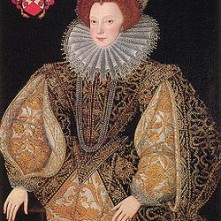 1528 – Henry VIII made a public oration to “the nobility, judges and councillors and divers other persons” at Bridewell Palace to explain his troubled conscience regarding the lawfulness of his marriage to Catherine of Aragon. In this speech, the King explained that due to his worry that Mary was not his lawful daughter and that Catherine was not his lawful wife, he had sent for a legate “to know the truth and to settle my conscience.”
1528 – Henry VIII made a public oration to “the nobility, judges and councillors and divers other persons” at Bridewell Palace to explain his troubled conscience regarding the lawfulness of his marriage to Catherine of Aragon. In this speech, the King explained that due to his worry that Mary was not his lawful daughter and that Catherine was not his lawful wife, he had sent for a legate “to know the truth and to settle my conscience.”
1534 – Death of William Blount, 4th Baron Mountjoy, courtier, scholar and literary patron, at Sutton on the Hill in Derbyshire. He was buried at Barton Blount. Mountjoy was a pupil of the great humanist scholar, Erasmus, and served Henry VIII as Master of the Mint and Chamberlain to Catherine of Aragon. It was Mountjoy who had to tell Catherine of her demotion to Princess Dowager in July 1533.
1541 - Archbishop Thomas Cranmer returned to Hampton Court Palace to interrogate Catherine Howard, Henry VIII’s fifth wife and queen.
1543 – Birth of Lettice Knollys, daughter of Sir Francis Knollys and Catherine Carey, granddaughter of Mary Boleyn and wife of Walter Devereux, 1st Earl of Essex; Robert Dudley, 1st Earl of Leicester; and Sir Christopher Blount. Lettice was also mother to Robert Devereux, 2nd Earl of Essex; Penelope Rich, Lady Rich; and Dorothy Percy, Countess of Northumberland. Click here to read more about Lettice.
1602 – The opening of the Bodleian Library (Bodley's Library), Oxford, to the public.
1605 – Deaths of Gunpowder Plot conspirators Robert Catesby and Thomas Percy at Holbeche House on the Staffordshire border. It is thought that they were both shot by a single bullet fired from the gun of John Street of Worcester. Their heads were displayed on London Bridge.
9 November
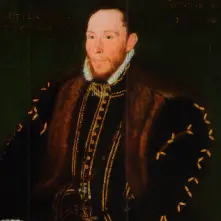
Thomas Percy, 7th Earl of Northumberland
1518 - Queen Catherine of Aragon gave birth to a daughter. We don’t know the full details of what happened, but either the baby was stillborn, or did not survive very long.
1569 – The Northern Rebellion or Rising of the North. In November 1569, an uprising led by Charles Neville, 6th Earl of Westmorland and Thomas Percy, 7th Earl of Northumberland, sought to depose Elizabeth I, replace her with Mary, Queen of Scots (who would marry the Duke of Norfolk) and restore the Catholic faith as the faith of England. Although the rebels were successful in occupying Durham, where they took mass in the cathedral, Staindrop, Darlington, Richmond, Ripon and also Barnard Castle, they were finally forced to retreat north. Northumberland and Westmorland fled to Scotland. Their rebellion had been a failure.
1593 – Death of William Harris, historian and topographer, at St George's Chapel, Windsor. He was buried in the chapel. Harris's works included “Historicall Description of the Island of Britain” and “The Great English Chronology”.
1596 – Burial of George Peele, poet and playwright, at St James's Clerkenwell. His plays included “The Arraignment of Paris”, “Edward I”, “The Battle of Alcazar”, “The Old Wives' Tale” and “The Love of King David and fair Bethsabe”. Click here to read about Peele.
1623 – Death of William Camden, Richmond Herald, antiquary, historian, topographer and officer of arms, at Chislehurst in Kent. He was aged seventy-three. He was buried in the south aisle of Westminster Abbey. Camden is known for his “Britannia”, which was the first chorographical survey of Great Britain and Ireland, and his Annales Rerum Gestarum Angliae et Hiberniae Regnate Elizabetha, his history of Elizabeth I's reign
10 November
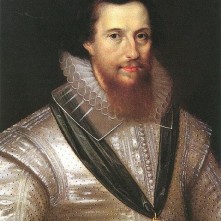
Robert Devereux
1483 – Birth of reformer, priest and theologian Martin Luther at Eisleben, Saxony. He was the son of Hans and Margarethe Luther (or Luder). Luther was a crucial figure in the European Reformation and is known for his “Ninety-Fives Theses” (or “Disputation of Martin Luther on the Power and Efficacy of Indulgences”) of 1517 and his teaching of justification by faith, i.e. that salvation came as a gift of God's mercy from faith in Jesus Christ and that it could not be earned by good works.
1536 – Death of Sir Henry Wyatt, politician, courtier, Privy Councillor and father of Sir Thomas Wyatt. He was buried at Milton in Kent. He acted as an executor of Henry VII's will, and his offices during Henry VIII's reign included Privy Councillor, Joint Captain of Norwich Castle, Knight-Banneret, Master of the Jewels and Treasurer of the King's Chamber.
1542 – Death of Sir Richard Pollard, law reporter, member of Parliament and King's Remembrancer of the Exchequer.
1556 – Death of Richard Chancellor, English explorer and navigator. Chancellor was drowned after saving the Russian ambassador, Osip Napeya, when their ship, The Edward Bonaventure, was wrecked in Pitsligo Bay, just off the Aberdeenshire coast. Chancellor is known as being the first foreigner to enter the White Sea and establish relations with Russia. He met Ivan the Terrible, the Russian Tsar, in the winter of 1553/4.
1565 - Birth of Robert Devereux, 2nd Earl of Essex, at Netherwood, Herefordshire. Devereux was the eldest son of Walter Devereux, 1st Earl of Essex, and Lettice Knollys, granddaughter of Mary Boleyn, and was a favourite of Elizabeth I.
1597 – Death of Peter Wentworth, member of Parliament, in the Tower of London. He had been imprisoned in 1593 after drafting the treatise “A Pithie Exhortation to her Majestie for Establishing her Successor to the Crowne” on the royal succession.
1610 – Death of Sir Thomas Wilford, member of Parliament and soldier, at his home in Hedding, Kent. He served as a soldier in Ireland, the Low Countries and France. His offices included Deputy Lieutenant of Kent and Governor of Camber Castle.
11 November
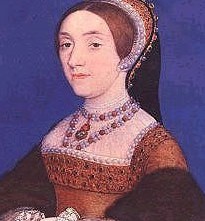
Catherine Howard
The Feast of Martinmas - click here for details.
1491 – Birth of Martin Bucer, theologian and leading reformer, at Sélestat in Alsace. Bucer was the leading reformer of Strasbourg and was influenced by Martin Luther. His works included Defensio adversus axioma Catholicum, “Von der Waren Seelsorge” (“Concerning true pastoral care”), Gratulatio ad ecclesiam Anglicanam (“Congratulation to the English church”), “Bestendige Antworten (“Steadfast response”) and De ordinatione legitima (“On restoring lawful ordination”). While in exile in England in 1549, Bucer was commissioned to review the “Book of Common Prayer”.
1508 – Death of Sir Edward Brampton, soldier and merchant, at Lisbon in Portugal. He had been given a licence to settle in Portugal in 1487, and was known there as Duarte Brandão.
1534 - Philippe de Chabot, Seigneur De Brion and Admiral of France, landed on English soil. As the French ambassador to England, his visit was apparently intended to renew relations between England and France, so it was an important one. George Boleyn, Lord Rochford and brother of Queen Anne Boleyn, was chosen to meet the Admiral and escort him from Dover to London.
1541 – Catherine Howard, fifth wife of Henry VIII, was moved from Hampton Court Palace to Syon House where she was “examined touching Culpeper”, i.e. her alleged relationship with Thomas Culpeper, a member of her husband’s Privy Chamber.
1546 – Birth of Richard Madox, diarist and Church of England clergyman, in Shropshire. He is known for the diary he kept of Captain Edward Fenton's voyage to the Moluccas, while he was serving as Fenton's Chaplain and Secretary. Madox died during the voyage.
1563 – Burial of chronicler Henry Machyn (Machin) in London. He died after contracting the plague. Machyn is known for his chronicle “The Diary of Henry Machyn, Citizen and Merchant-Taylor of London, from A.D. 1550 to A.D. 1563”.
1593 – Death of Christopher Carleill, soldier and naval commander, in London. Carleill's naval and military career saw him serving in the Low Countries, France and Ireland. He also commanded the land force on Sir Francis Drake's expedition to Santo Domingo. Carleill was also known for his knowledge of mathematics, languages and his skill at poetry.
12 November
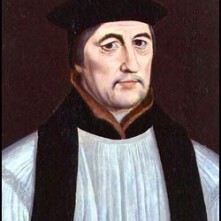
Stephen Gardiner
1532 – Henry VIII and Anne Boleyn finally left Calais after being delayed by a Channel fog. They landed at Dover on Thursday 14th November. They had been visiting Calais to meet with the French king, Francis I.
1537 – Jane Seymour’s body was taken by chariot from Hampton Court Palace to Windsor Castle. Click here for more information.
1554 – The opening of Mary I’s third Parliament. At this Parliament, a bill was passed allowing the exiled Cardinal Reginald Pole to return to England as papal legate.
1555 – Mary I's Parliament re-established Catholicism in England.
1555 - Stephen Gardiner, Bishop of Winchester and Mary I’s Lord Chancellor, died. Gardiner crowned Mary I Queen of England at her coronation at Westminster Abbey on the 1st October 1553, and helped Mary to restore Catholicism and overturn the annulment of her parents’ marriage, making her legitimate. He was also instrumental in the marriage negotiations between Mary and Philip II of Spain, and married the couple at Winchester Cathedral on the 25th July 1554. He was laid to rest at Winchester Cathedral in what is now known as the Bishop Gardiner Chantry Chapel.
1576 – Death of Sir Edward Saunders, judge. He was buried at Weston under Wetherley, Warwickshire. Saunders' offices included Serjeant-at-Law, Recorder of Coventry, Chief Justice of the King's Bench and Chief Baron of the Exchequer.
1586 – A delegation of forty MPs and twenty peers presented Elizabeth I with a petition demanding that “a just sentence might be followed by as just an execution” in the case of Mary, Queen of Scots.
1595 – Death of Sir John Hawkins, merchant, shipbuilder, navigator, explorer, slave trader and naval commander, at Puerto Rico on a voyage, with Sir Francis Drake, which aimed to capture Panama. He was buried at sea. Hawkins is known for being the chief architect of Elizabeth I's navy, and he was knighted for gallantry after serving as Vice-Admiral during the Spanish Armada.

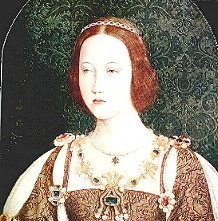

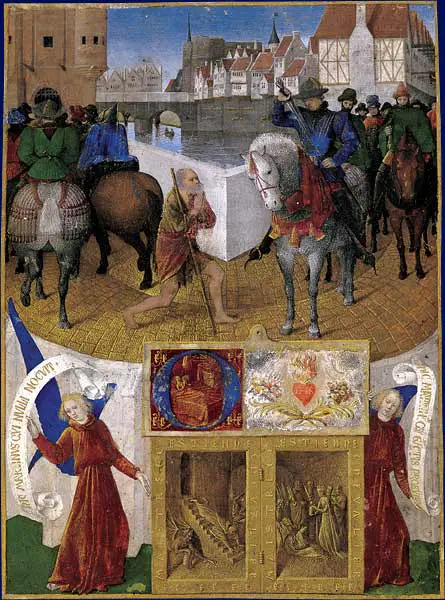
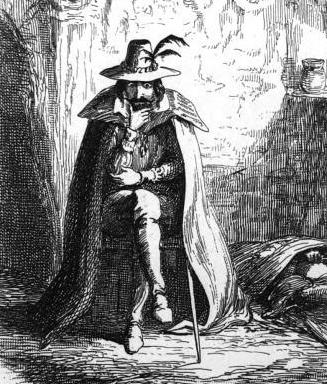
Leave a Reply